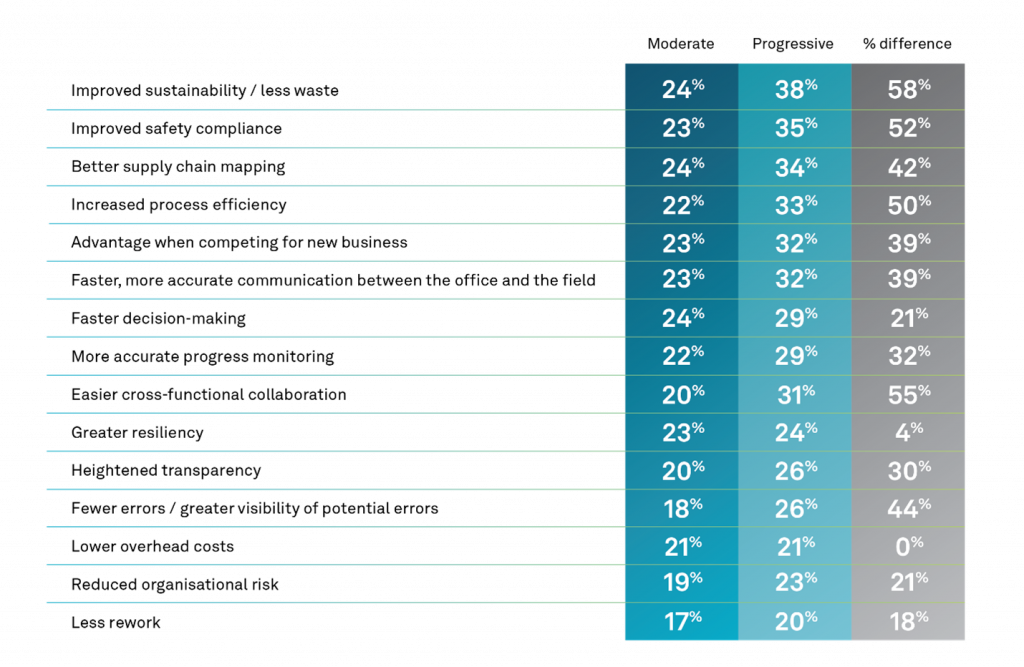Autonomous technology is reshaping the construction industry. This transformation is predominantly driven by the ability to discern insights from the mountains of data produced on construction sites — enabling construction firms to achieve better project outcomes.
The impact of incorporating autonomous processes in construction operations is more significant than you might initially think. Although it may seem obvious that implementing more autonomous processes in a construction project will lead to better outcomes, the magnitude of the benefits may still be surprising. According to our recent Autonomous Construction Tech Outlook report, firms utilising four or more construction automation systems in their operations have seen an increase of 58% in sustainability and waste reduction, a 52% boost in safety compliance and a 55% increase in collaboration compared to firms using three or fewer such systems.
The key takeaway? Autonomous technology is more than a buzzword; it has tangible effects that make construction safer, more efficient and more sustainable.
The core of these benefits lies in “sensor-software systems”. These systems form the backbone of autonomous workflows. Analogous to the human body, each component of these systems performs a distinct role. Sensors are the eyes, recording the environment. The software, powered by artificial intelligence (AI), is the brain that analyses the data and makes informed decisions. Together, they guide autonomous equipment to the appropriate actions, bringing construction sites to life with intelligent automation.
Consider the task of improving jobsite transparency. This process involves utilising cameras to capture real-time footage, which is then autonomously fed into a software system for interpretation using AI and machine learning. The system processes, organises and analyses the data and autonomously derives essential insights, which are promptly shared with relevant stakeholders. This seamless integration of sensing (capturing footage), processing (AI analysis) and action (autonomous workflow distribution) symbolises the future of efficient construction management. Any disruption to this workflow results in decreased efficiency and increased errors, underscoring the necessity of thorough integration.
But let’s address the elephant in the room — is total autonomy necessary to garner these benefits? Interestingly, the answer is no. Partial autonomy can also yield substantial improvements. For instance, incorporating autonomous or automated processes in specific departments, like payroll, can reduce overhead costs. The key is to select the right level of autonomy for your particular needs.
In addition, the real-time data analysis provided by autonomous construction systems supports informed decision-making, increasing efficiency and empowering workers by giving them access to critical information they need, when they need it. This enhanced access to data can aid in skills development, as workers can learn from the insights generated by these systems.
The advantages of autonomous technology in construction extend beyond operational enhancements. They tackle real-world challenges such as safety hazards, inefficiencies and waste. Autonomous technology is closing data gaps and unlocking the full potential of data, propelling the industry forward in ways previously unimaginable.
Whether you’re in the construction industry or merely an interested bystander, this shift affects you. Autonomy promotes safer construction sites, quicker building times, cost savings and more sustainable building practices. In essence, autonomous technology in construction isn’t just shaping structures; it’s shaping a better future. Embracing this transformation equates to becoming part of an industry poised for positive change.
Learn more about the benefits of construction automation in our recent report.


















